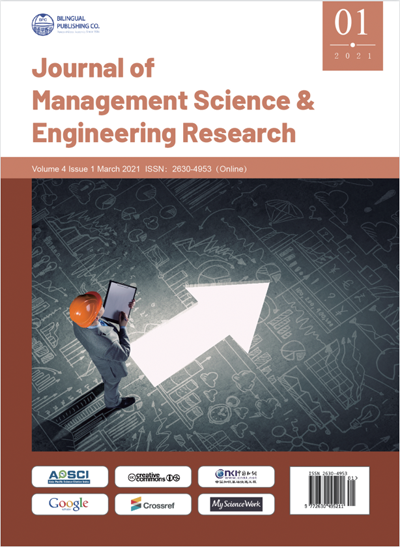-
6288
-
759
-
429
-
420
-
325
Re-designing Conventional Face Mask by Using Triz (Teoriya Resheniya Izobreatatelskikh Zadatch) Method
DOI:
https://doi.org/10.30564/jmser.v4i1.2714Abstract
New Normal becomes the way out to keep Indonesia's weakened economy because of covid-19 pandemic stays in balance. Of course, New Normal must be well-balanced with the application of strict protocols to reduce transmission rates and anticipate a surge in new cases. From a few points of pandemic protocols, using face mask is considered as the most-effective basic need. Re-designing the mask is aiming at eliminating the worsening feature and developing the improving feature. This research is developing the widely used 1-ply mask, which doesn't meet WHO standard regarding cloth-material mask that must be made in 3-ply. The method used in this research is TRIZ (Teoriya Resheniya Izobreatatelskikh Zadatch), an inventive problem solving theory to the issues regarding ideas, products, or concepts, in this case is face mask redesigning concept. In this research, the data are collected by doing library research to obtain secondary data that will be processed in qualitative and quantitative methods. The results show the aspects that should be eliminated from cloth-material face mask are brittle for being easily damaged, short period of usage, and non-reusable. After the redesigning concept is carried out using the principles and features of TRIZ method, some aspects such as weight, material, design, and functionality are developed. The result is a relatively light weight face mask because the using of PLA+filament-based material with good durability and environmentally friendly. This design has a longer period of usage, and the user only needs to replace the additional inserted tissue every 4 hours. The researchers hope that the new design can be further developed by government to deal with New Normal and other possibilities in the future.
Keywords:
New normal;Covid-19;Face mask;Re-designing;TRIZReferences
[1] Yuliarty, P., Permana, T. and Pratama, A. (2013)‘Pengembangan Desain Produk Papan Tulis Dengan Metode Quality Function Deployment (Qfd)’, Jurnal Ilmiah PASTI Volume, VI(1), pp. 1-13.
[2] Putri, D. and Oemar, H. (no date) ‘Perbaikan kualitas dengan menggunakan metode triz untuk meminimasi cacat pada proses pembuatan al-qur’an di PT Sygma Exa Grafika’, pp.473-480.
[3] Ramos&dkk (2015) ‘Perancangan Produk Tas Ransel Anak Menggunakan Metode Theory of Inventive Problem Solving ( Triz ) *’, online Institut Teknologi Nasional ISSN: 2338-5081, 03(2), pp. 185-196.
[4] Yuliarty, P., Permana, T. and Pratama, A. (2013)‘Pengembangan Desain Produk Papan Tulis Dengan Metode Quality Function Deployment (Qfd)’, Jurnal Ilmiah PASTI Volume, VI(1), pp. 1-13.
[5] Utami, E. (2018) ‘Perancangan Desain Kemasan Produk Olahan Coklat “Cokadol” Dengan Metode Quality Function Deployment’, Integrasi Sistem Industri, 5(2), pp. 91-100.
[6] Ardani, F., Ginting, R. and Ishak, A. (2014) ‘Perancangan Desain Produk Spring Bed Dengan Menggunakan SWOT and quality function deployment(QFD)’, e-Jurnal Teknik Industri FT USU, 5(1), pp.1-6.




 Ahmad Padhil
Ahmad Padhil





